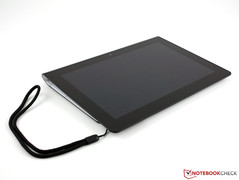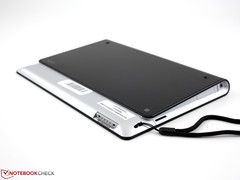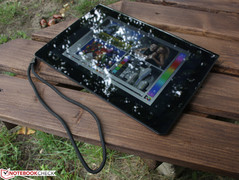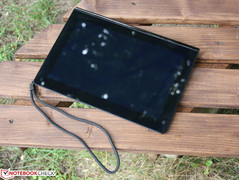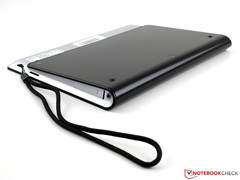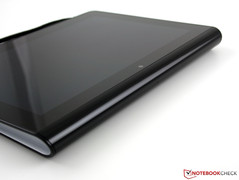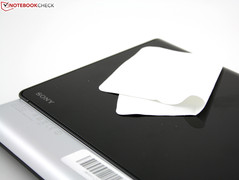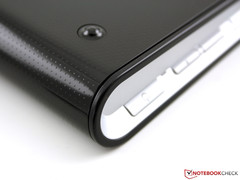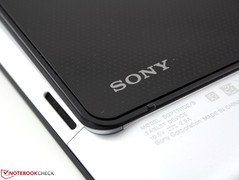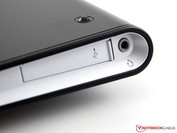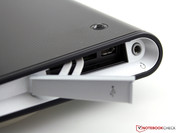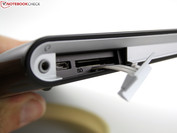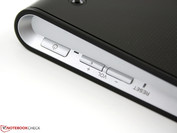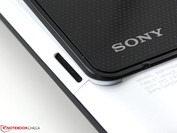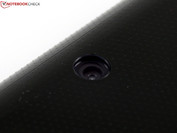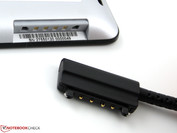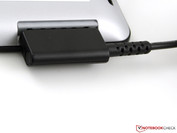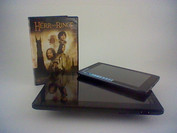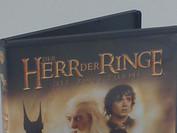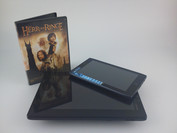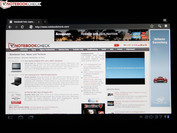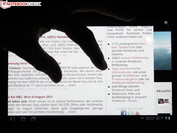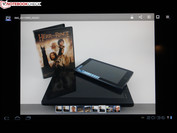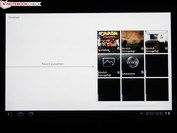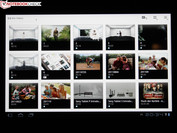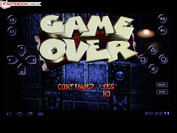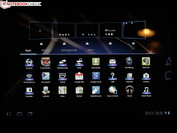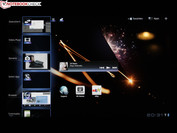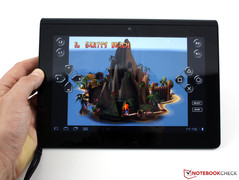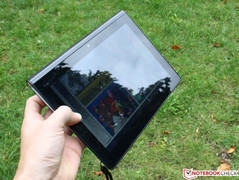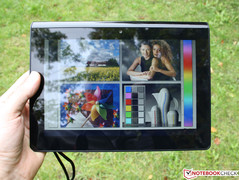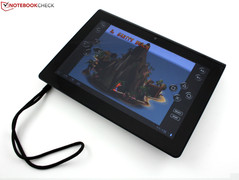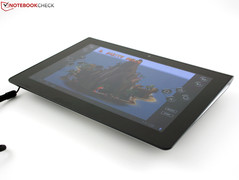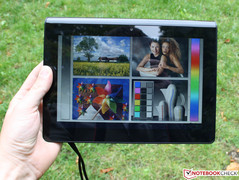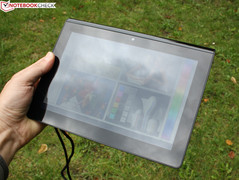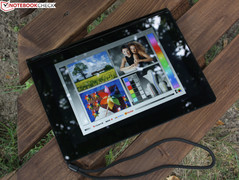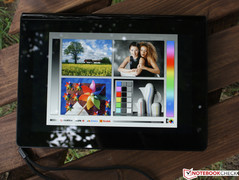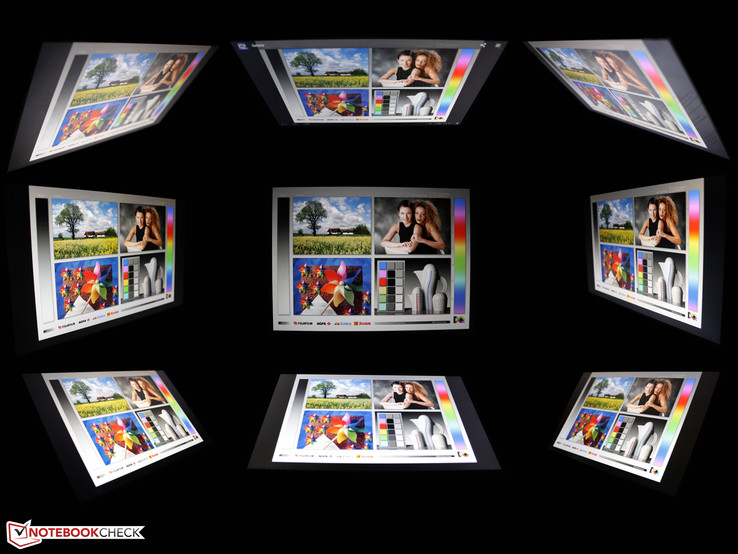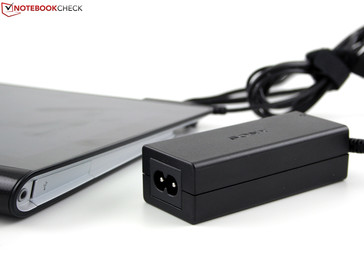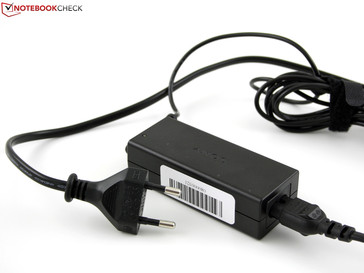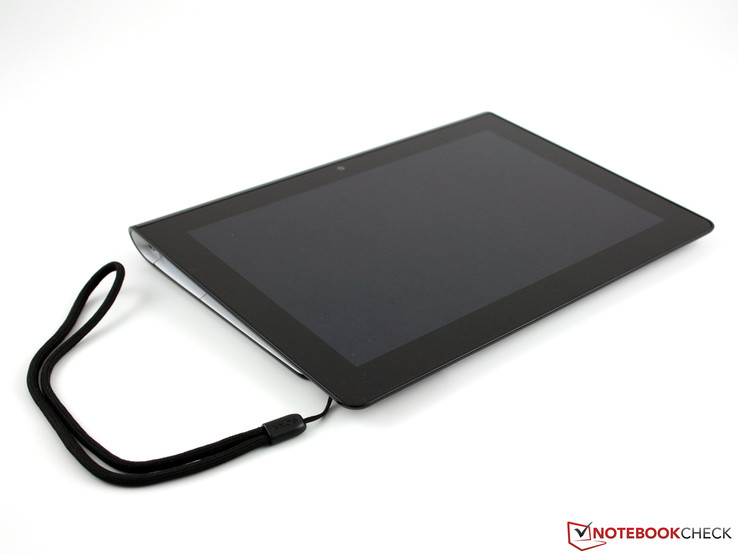Hands-On: Sony S1 9.4" Tablet in Review
The Vaio tablets S1 and P1 (formerly S2) have sporadically been in the news for months. Here and there a few pictures or a blurred hands-on – and of course the teasers created by Sony itself. It's likely not a coincidence that the market and the tablet keen press, lured in this manner, flocked to the IFA 2011 in hordes to take a closer look at the slim devices.
We didn't want to convey a jaded impression of the trade-show booth with a video message. Instead we took a few days time. Sony Germany provided us with a pre-series model of the big S1 tablet for a short test. It is one of the devices like showcased at the IFA booth. Due to the pre-series qualities of the S1, we will not deal with assessment and performance details for the time being.
Case & Design
The 595 gram (manufacturer: 598g) tablet with a 9.4 inch screen isn't exceptionally light when compared with the competition. An iPad 2 (9.7 inch; 601/195grams) is about just as heavy, but its power adapter is lighter. The LG Optimus Pad V900 (8.9 inch, 623 grams) weighs just slightly more. The somewhat bigger Samsung Galaxy Tab 10.1v (10.1 inch, 574/65 grams) is even lighter and has an ultra lightweight power supply.
The Sony S1 is very pleasant to hold. The asymmetrical shape doesn't feel like it's going to slip out of your hands. Since the chassis increases in thickness, it is clamped between your fingers like a wedge. The shape, inspired by a folded sheet of paper, provides a lot of different possibilities for holding it. The picture is accordingly tilted into every position.
Although Sony solely uses plastic, it is a very solid and stable case. Alike most tablets, the battery is built-in. Pressure on the top or flipside doesn't induce yielding.
In comparison to the stylish look of the case, the 192 gram heavy power adapter looks like a stale laptop power adapter. A slim plug-in power cord would have looked more apt for the tablet, in particular since the 30 watt adapter that is used is oversized for the maximum power consumption of 12.5 watts (video playback, maximum brightness, including charge).
Connectivity
Such a tablet doesn't need many physical interfaces. Consequently, Sony doesn't use MicroHDMI or the like, and only installs a micro USB and SD card reader in standard size. The latter is a highlight because most tablets are only equipped with a microSD card reader (Motorola Xoom, HTC Flyer 7"), if at all (iPad 2, Samsung Galaxy Tab 10.1v, LG V900 Optimus Pad).
The advantage of a standard SD is the inexpensive, bigger and faster memory cards. Consequently, the internal memory of 16/32 GB can be expanded up to 64 GBs (starts at 70 euros in retail). We'll find out whether or not the SD reader can really read SDXC and / or SDHC at latest when we have the serial device in for review. It's great that the big SD memory card slot is virtually invisible due to a flap.
Sony will be releasing the tablet at the end of September with Android 3.1 (Honeycomb). The operating system, optimized for finger inputs, is installed on either 16 or 32 GB of internal memory. A 3G version, supported by an entry level wifi model (starts at 479 euros RRP), is to follow in October.
Sony doesn't use any gimmicks like 3D cameras and installs conventional front and rear sided cameras. Their resolution is very low with 0.3 MP (front 640x480), respectively very lavish with 5 MP (flipside, up to 2592x1933 / 4:3). It's possible to select the format (4:3 / 16:9), as well as zoom up to 8 times. The following pictures show the results taken in artificial light:
The S1 is "PlayStation certified". This means that the PlayStation 1 classics, Crash Bandicot and Pinball Heroes, are installed. More PS games should be available. But this doesn't mean that the S1 can be used as a controller.
A feature of the S1 is the infrared port. The tablet mutates to a remote control for stereo systems (also third-party) and TVs (integrated universal infrared remote). A quick trial on the Onkyo system at home didn't work, though. Another media feature is DLNA for content streaming contents directly to a DLNA capable TV, for example.
Like many other manufacturers, Sony has modified the Android OS Honeycomb 3.1 and equipped it with its own matching apps right away. Worth mentioning would be Personal Space (content sharing), Reader Store (eBooks), Social FeedReader and Zinio (fee-based newspaper client). Alike other manufactures, Sony wants to lure the users to its own stores with for example Video Unlimited and Music Unlimited. The video service is installed on most Sony HD TVs.
Input Devices
Display
The IPS screen (in plane switching) has a width of 1280x800 pixels and is supposedly a warranty for good contrasts, focus and brightness. We won't execute any contrast measurements because it is a pre-series model. However, we can say that it has a high contrast just by looking at it.
The brightness is perfectly suitable for indoor and outdoor use. Nevertheless, the reflections cause more or less annoying mirroring in daylight. However, this is true for almost every consumer tablet. Even the smudging of the screen's hard surface is a fact that hasn't harmed the popularity of the Apple iPad or any other tablet PC.
As to be expected from IPS, the viewing angles are good to very good. Shadowy ghost images don't develop when looking down, up or laterally onto the screen, as seen in the majority of laptops.
Performance
Nvidia's Tegra 2 processor (1 GHz) is a "system on a chip". The dual core ARM Cortex-A9 CPU, a GeForce ULP-GPU, RAM, video processor and audio cards are soldered onto one die. The Tegra-2 is becoming increasingly popular among OEMs and can be found in Acer's Iconia Tab A100/A500, Asus' Eee Pad Slider/Transformer, Dell's Streak 7, LG's Optimus Pad V900, Motorola's Xoom, Toshiba's AC100-10V and Samsung's Galaxy Tab 10 in the meantime. Although it seems there is nothing else, it must be said that the iPad 2 is based on Apple's A5 (0.9 GHz) and the HTC Flyer 7" is based on a Qualcomm Snapdragon MSM8255 (1.5 GHz).
We will reveal details about the clock frequencies, performance (Android benchmarks), etc of the ARM processor and GeForce GPU in the upcoming, detailed review. The assessment of such data wouldn't be fair for our pre-series device. We'll therefore postpone the gaming check of Android games.
From the user's view, the S1 proves to have a very smooth control. No matter if Crash Bandicot, pinball, browser, video playback or switching among opened tasks, everything works without difficulty. Numerous programs waiting in the background opened reliably even after hours and standby.
Emissions
The two speakers emit their sound from the case's right and left. Hands don't threaten to cover up the little openings so soon because of the "turned over leaf" design. The volume is acceptable for a device with this size, but the sound is midrange-heavy. Thus, headphones would be the option of choice. These and/or a microphone can be connected to the analog combo port.
Battery Life
The battery lasted for 8:28 hours in a mixed test of website surfing and watching a few video clips at a medium brightness. Additionally, there was a seven hour standby period over night, whereby the battery charge dropped from 75 to 69%. So it looks like an attractive battery life that surpasses the iPad 2 (7:30 WLAN test), LG V900 (7:15) and Motorola Xoom (7:26). Our Galaxy Tab 10.1v (9:35) however still lasted the longest time. Nevertheless, we will first be able to make final statements in the review of the production model.
Verdict
We like the Android tablet, Sony S1. The multi-tasking capabilities of Tegra 2 and Honeycomb's easy to use multi-touch control are swiftly implemented. The S1 offers everything that we expect of a modern tablet PC based on Android and is topped off with a color and viewing angle strong IPS screen.
The interfaces are limited to USB, SD and audio, but they suffice for the entertainment characteristic. The SD reader in standard size (no microSD!) is praiseworthy because, as far as we know, no other known consumer tablet has that.
The Sony S1 can't be mistaken for an iPad 2, even if the screen size is very similar (9.4 instead of 9.7 inches). The striking design of a folded sheet of paper is unique. The lightweight device is very pleasant to hold and also has a stable and high-end feel even without an aluminum finish. The inexpensive wifi version of the Sony S1 (similar to the test device) will be available in Germany at the end of September for 479 euros.




